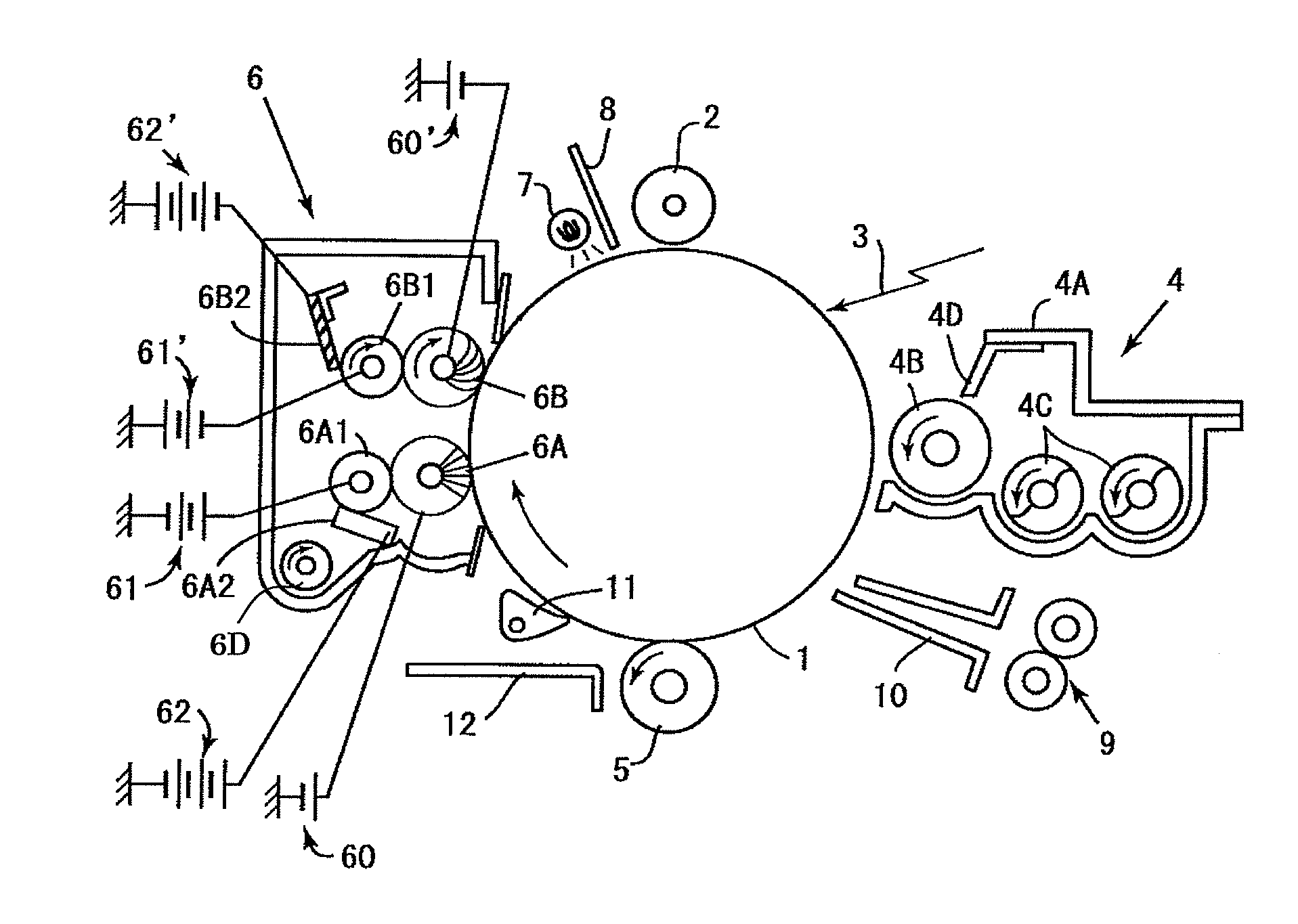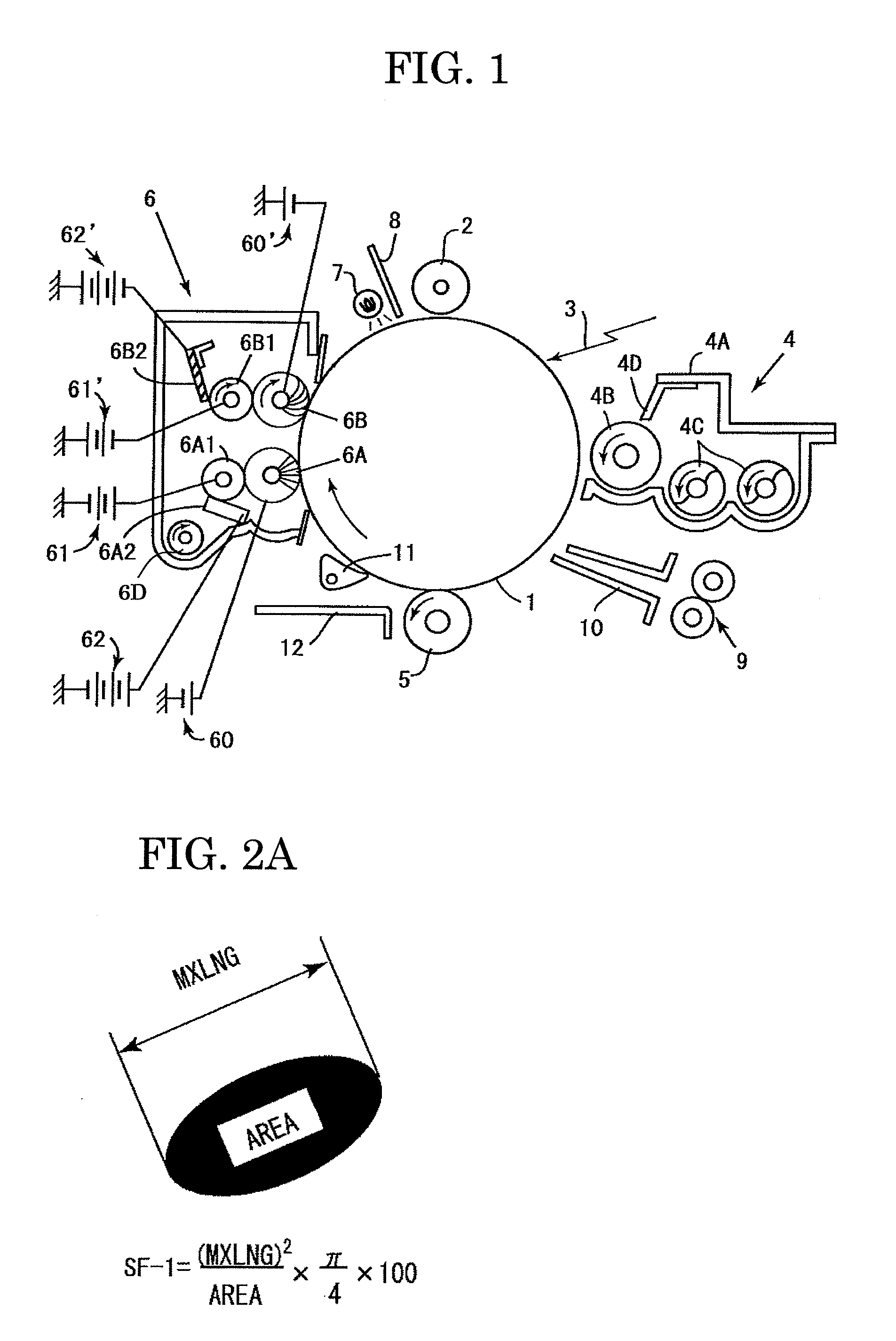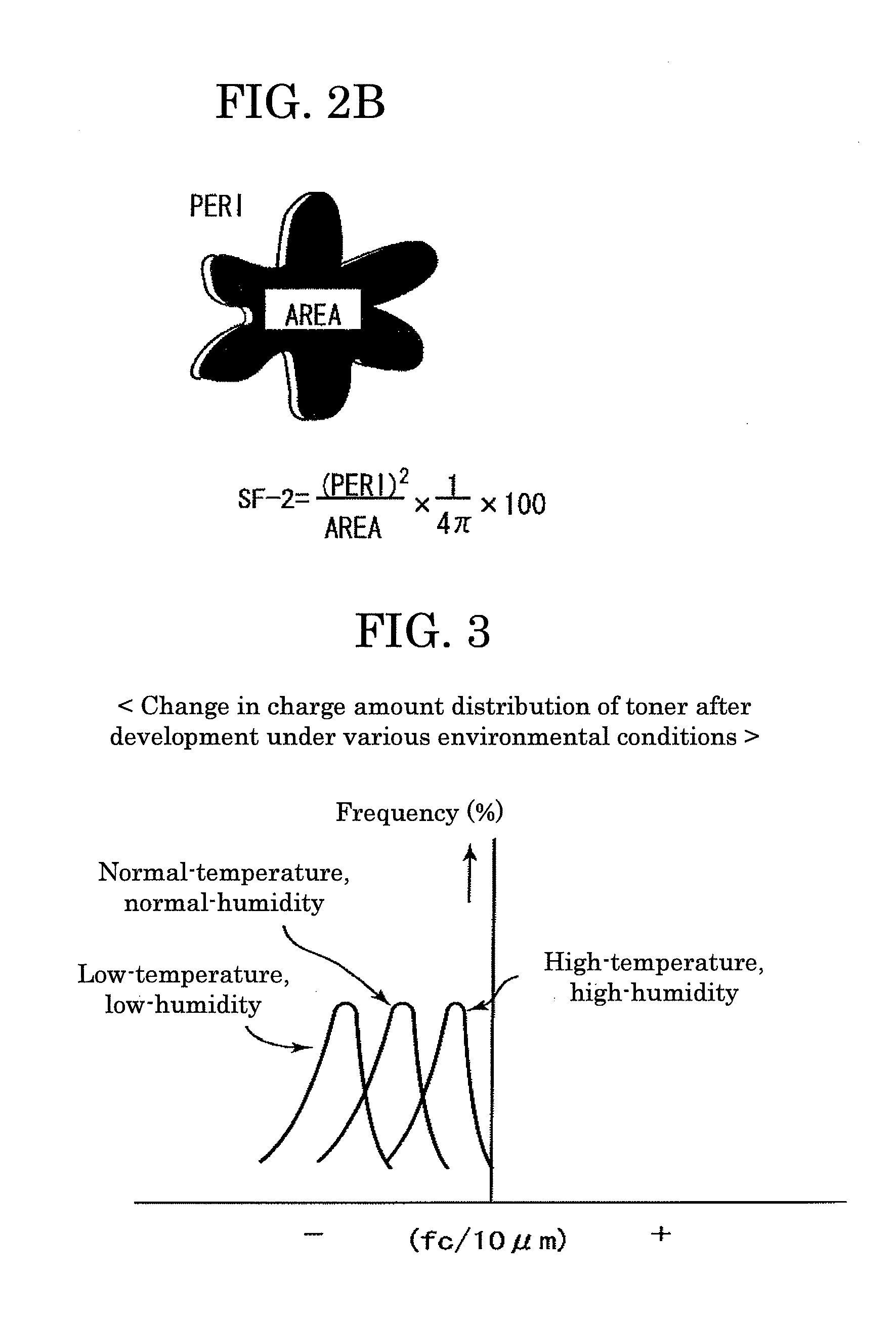Cleaning device and image forming apparatus
a technology of cleaning device and image bearing member, which is applied in the direction of optics, instruments, electrographic processes, etc., can solve the problems of image bearing member cleaning failur
- Summary
- Abstract
- Description
- Claims
- Application Information
AI Technical Summary
Benefits of technology
Problems solved by technology
Method used
Image
Examples
example 1
[0212]In this Example, there is used an image forming apparatus shown in FIG. 1 whose second brush roller 6B has obliquely provided brush fibers (shown in FIG. 15A) with a sheath structure shown in FIG. 9 or 10.
[0213]Next will be given specific information concerning some constituent members of the cleaning device. The specific information will be described in a manner similar to that employed above in relation to the experiment using the image forming apparatus shown in FIG. 19.
First Brush Roller 6A:
[0214]Material: conductive polyester
[0215]Backing width: 5 mm
[0216]Brush fiber height: 3 mm
[0217]Conductive agent: homogeneously dispersed in a surface (FIG. 8)
[0218]Arrangement of brush fibers: upright provided
[0219]Diameter of the brush roller: 14 mm
[0220]Resistance of brush original yarn: 108 Ω·cm
[0221]Brush fiber density: 100,000 / inch2 (1 inch=0.0254 m)
[0222]Intrusion amount with respect to photoconductor drum: 1 mm
Recovering Roller 6A1:
[0223]Material: metal core: SUS
[0224]Intermedi...
example 2
[0262]In Example 2, there is used an image forming apparatus whose second brush roller 6B, which is disposed downstream of the first brush roller in a direction in which the photoconductor drum 1 is moved, has looped brush fibers as shown in FIG. 15B.
[0263]FIG. 21 is an enlarged view of the looped brush fibers of the second brush roller (for the sake of convenience, each looped brush fiber is denoted by reference character 6B′).
[0264]In the image forming apparatus shown in FIG. 1, the second brush roller 6B has obliquely provided brush fibers which come into contact with the photoconductor as shown in FIG. 15A. But, as time passes, the brush fibers change in form from the initial state, potentially resulting in that they come into contact with remaining toner particles as shown in FIG. 11. In view of this, even after change in form over time, the brush fibers are looped, preventing the conductive agent from coming into contact with toner particles.
[0265]In the looped brush fibers, t...
example 3
[0284]The configuration of this Example is characterized in that the metal core of the recovering roller is connected to the ground.
[0285]FIG. 22 is an enlarged view of the recovering roller 6A1 which is in contact with the first brush roller 6A. In this figure, the metal core of the recovering roller 6A1 is not given a voltage but connected to the ground.
[0286]Here, voltages applied to members are set as follows.
Voltages Applied:
[0287]Power source 60: +250 V
[0288]Recovering roller 6A1: 0 V (connected to the ground)
[0289]Power source 62: +1,100 V
[0290]Power source 60′ (not illustrated): −450 V
[0291]Recovering roller 6B1 (not illustrated): 0 V (connected to the ground)
[0292]Power source 62′ (not illustrated): −1,200 V
[0293]Also, an AC voltage may be superposed on a voltage applied from the power source 60 or 61. In this case, for example, an unillustrated power source for the power source 60 is set to 2.5 kVpp, 600 Hz and +600 V, and an unillustrated power source for the power source...
PUM
 Login to View More
Login to View More Abstract
Description
Claims
Application Information
 Login to View More
Login to View More - R&D
- Intellectual Property
- Life Sciences
- Materials
- Tech Scout
- Unparalleled Data Quality
- Higher Quality Content
- 60% Fewer Hallucinations
Browse by: Latest US Patents, China's latest patents, Technical Efficacy Thesaurus, Application Domain, Technology Topic, Popular Technical Reports.
© 2025 PatSnap. All rights reserved.Legal|Privacy policy|Modern Slavery Act Transparency Statement|Sitemap|About US| Contact US: help@patsnap.com



